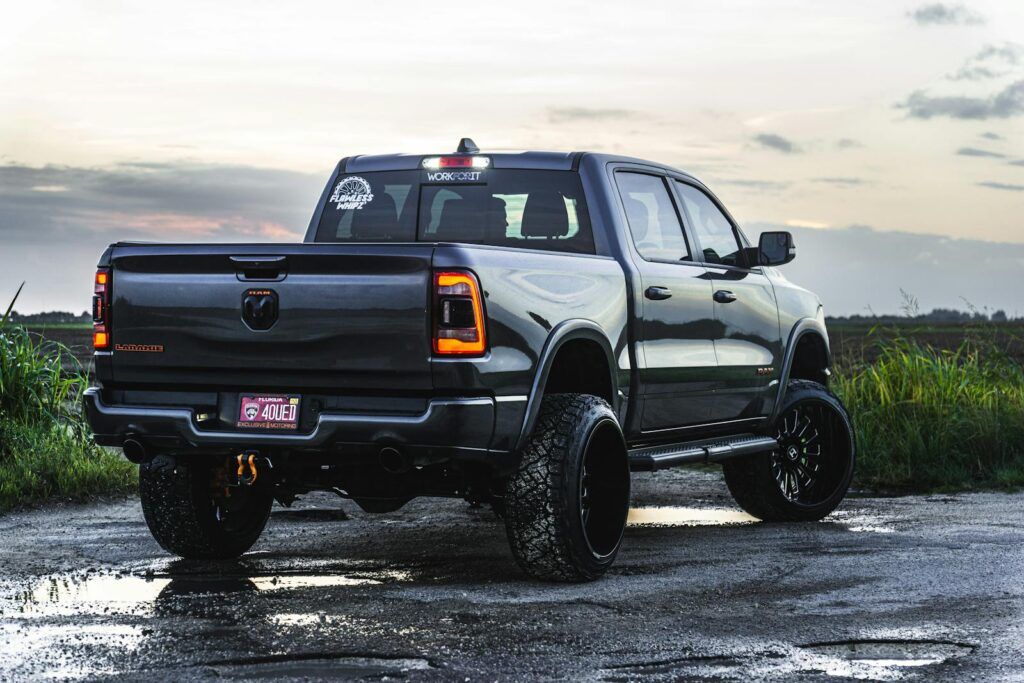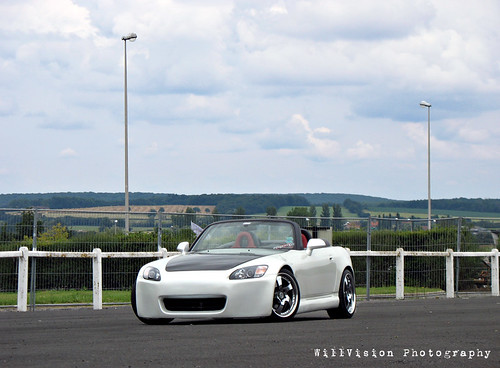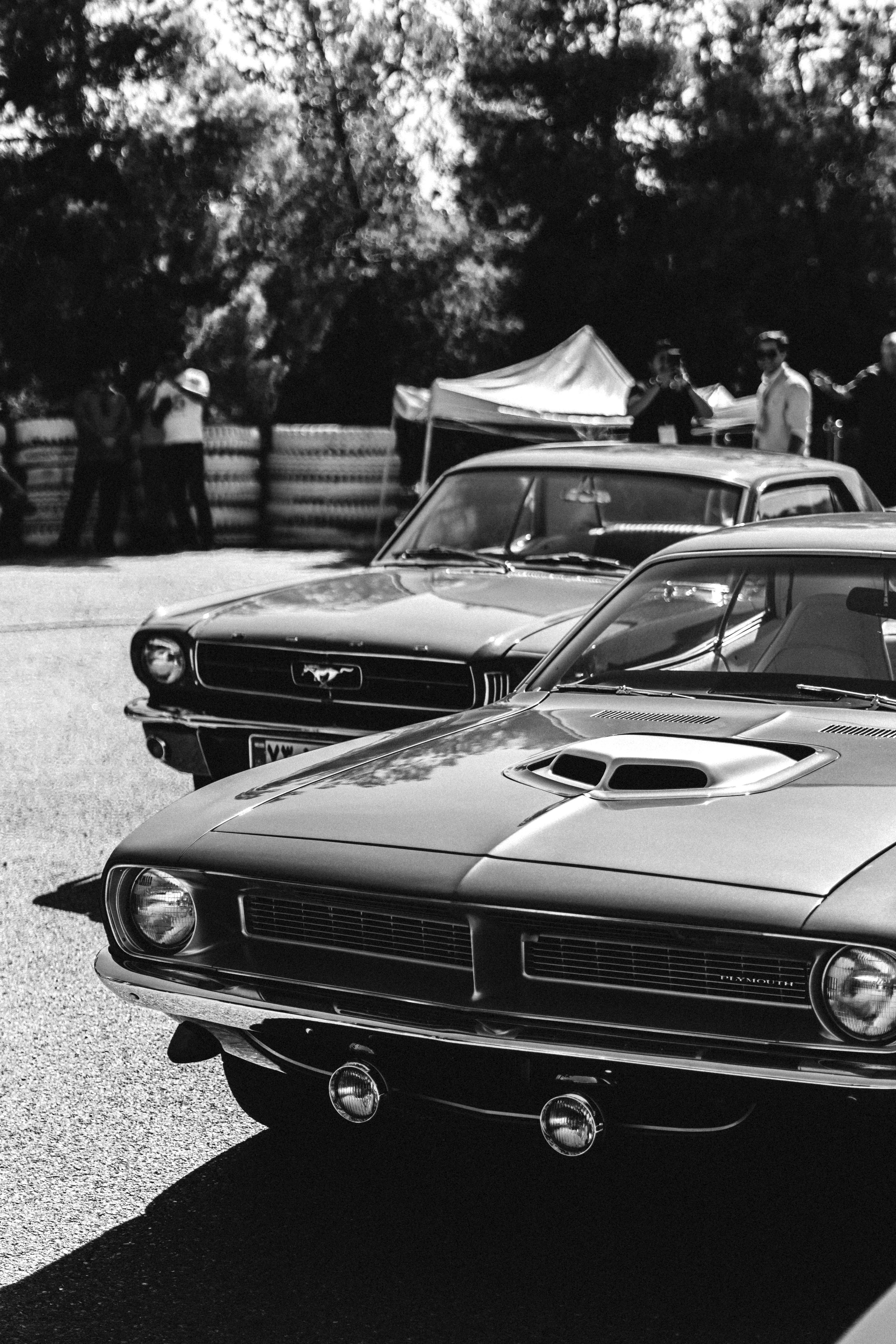
The 1960s and 1970s marked a truly exhilarating epoch in American automotive history, giving birth to a new breed of high-performance vehicles that undeniably captured the imagination of an entire generation. These were not just cars; they were potent symbols of raw power, aggressive styling, and an untamed desire for speed that transformed the American automotive landscape. Built primarily for quarter-mile street and drag races, these machines were characterized by their powerful V8 engines and unmistakable, muscular designs.
This vibrant era was fueled by fierce competition among prominent American auto manufacturers, each relentlessly striving to create the ultimate “supercar” that could dominate both the drag strip and the boulevard. Brands like AMC, Buick, Chevrolet, Dodge, Ford, Mercury, Oldsmobile, Plymouth, and Pontiac poured their unique vision and innovation into the performance arena, leading to a breathtaking array of iconic models. These cars, etched forever into the annals of automotive history, embodied a relentless pursuit of horsepower, style, and sheer performance.
As we journey back through this golden age, we’ll explore the mechanical monsters that roared with an authority that left onlookers awestruck and captivated. These vehicles became enduring icons, symbolizing freedom, rebellion, and the thrill of raw power, perfectly aligning with America’s cultural shifts and economic booms of the time. Get ready to rev through time as we spotlight 16 of the most influential muscle cars that defined this unforgettable era.
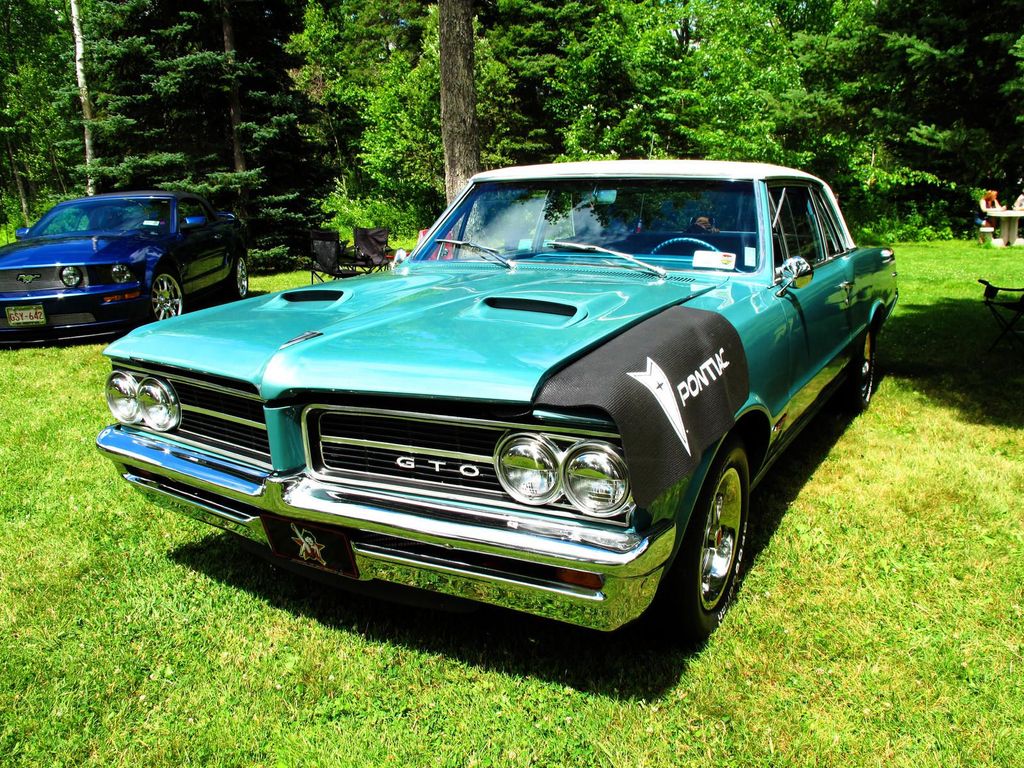
1. **1964 Pontiac GTO**The muscle car era officially roared to life in 1964, pioneered by the Pontiac GTO. This vehicle was so revolutionary it single-handedly launched the craze. Pontiac engineers conceived a performance package for their midsize Tempest, dropping a powerful 389 cubic inch V8 into a relatively light body, offered affordably.
This groundbreaking 1964 GTO came with three versions of the robust 389 V8, the pinnacle being the Tri-Power setup, churning out 348 horsepower. Mated to a four-speed manual, this powerhouse could launch from 0 to 60 mph in just over six seconds—a blistering acceleration for its time. The GTO sported aggressive badging, distinctive dual exhausts, and optional hood scoops.
The market’s reaction was electric. Pontiac’s initial projections were modest, but demand far surpassed expectations, with over 32,000 units sold that first year. This overwhelming success signaled a massive appetite for high-performance, affordable cars across the industry.
While other manufacturers followed suit, the 1964 GTO remained the definitive standard. It set the benchmark for what a muscle car should embody, cementing Pontiac’s reputation as GM’s audacious performance division. The GTO wasn’t just a car; it was a phenomenon, reshaping American car culture.
Car Model Information: 1967 Pontiac GTO Convertible
Name: Pontiac GTO
Caption: 2005 Pontiac GTO
Manufacturer: Pontiac (automobile),Holden
Class: Mid-size car,Compact car,Mid-size car
Production: 1963–1974,2003–2006
Predecessor: Pontiac Tempest
Layout: Front-engine, rear-wheel-drive layout
ModelYears: 1964-1974 2004-2006
Categories: 1970s cars, 2000s cars, All articles with unsourced statements, Articles with short description, Articles with unsourced statements from October 2008
Summary: The Pontiac GTO is a front-engine, rear-drive, two-door, and four-passenger automobile manufactured and marketed by the Pontiac division of General Motors over four generations from 1963 until 1974 in the United States — with a fifth generation made by GM’s Australian subsidiary, Holden, for the 2004 through 2006 model years.
The first generation of the GTO is credited with popularizing the muscle car market segment in the 1960s. Some consider the Pontiac GTO to have started the trend with all four domestic automakers offering a variety of competing models.
For the 1964 and 1965 model years, the GTO was an optional package on the intermediate-sized Pontiac LeMans. The 1964 GTO vehicle identification number (VIN) started with 22, while the 1965 GTO VIN began with 237. The GTO was designated as a separate Pontiac model from 1966 through 1971 (VIN 242…). It became an optional package again for the 1972 and 1973 intermediate LeMans. For 1974, the GTO was an optional trim package on the compact-sized Ventura.
The GTO model was revived for the 2004 through 2006 model years as a captive import for Pontiac, a left-hand drive version of the Holden Monaro, itself a coupé variant of the Holden Commodore.
Get more information about: Pontiac GTO
Buying a high-performing used car >>>
Brand: Pontiac Model: GTO
Price: $67,000 Mileage: 1,500 mi.
Read more about: The Road to Riches: 15 Classic Cars Skyrocketing in Value for Savvy Enthusiasts
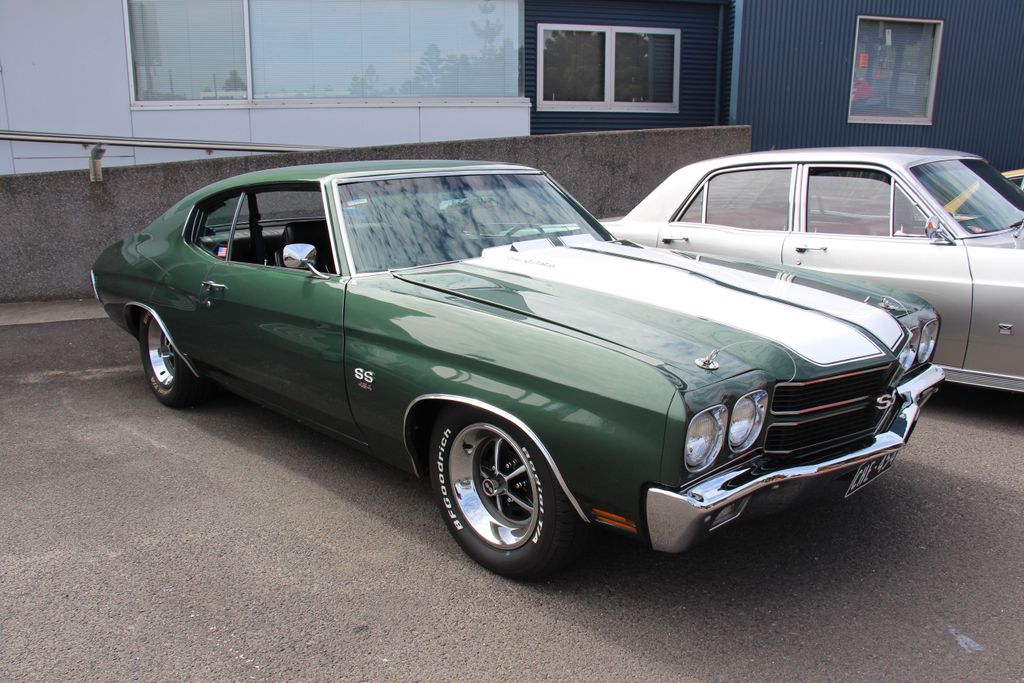
2. **1970 Chevrolet Chevelle SS 454**If the Pontiac GTO ignited the muscle car era, the 1970 Chevrolet Chevelle SS 454 represented its spectacular apex. By the early 1970s, horsepower wars escalated. Engine displacement climbed, tuning peaked, and styling became overtly aggressive. Chevrolet unveiled the Chevelle SS 454 LS6, stamping its name as one of the most powerful production muscle cars ever.
At its heart beat the legendary LS6 V8 engine, boasting a colossal 454 cubic inches (7.4 liters). This titan delivered 450 horsepower and 500 lb-ft of torque, enabling brutal acceleration. This translated into blistering 0–60 mph times under 6 seconds and quarter-mile runs in the low 13s. No other production muscle car of its time matched this formidable combination.
Innovation extended beyond engine size with cowl induction, an ingenious system utilizing a vacuum-operated hood scoop. This funneled cooler, denser air into the engine during heavy acceleration, significantly boosting performance. The car also came with beefed-up suspension, a robust 12-bolt rear differential, and optional heavy-duty components, designed to reliably handle its immense power.
Visually, the 1970 Chevelle SS 454 was as striking as its performance. Broad racing stripes, prominent SS badging, mag wheels, and a muscular stance gave it an undeniable presence. This was not a subtle vehicle; it was built to intimidate and excite. For many, the 1970 Chevelle SS 454 stands as the ultimate embodiment of raw, unapologetic power.
Car Model Information: 2023 Chevrolet Silverado 1500 ZR2
Name: Chevrolet Chevelle
Caption: 1970 Chevrolet Chevelle SS 396 Sport Coupe
Manufacturer: Chevrolet
Production: 1963–1977
ModelYears: 1964–1977
Class: Mid-size
Platform: GM A platform (RWD)
Layout: FR layout
Successor: Chevrolet Malibu
Categories: 1970s cars, All articles needing additional references, All articles that may contain original research, All articles with specifically marked weasel-worded phrases, All articles with unsourced statements
Summary: The Chevrolet Chevelle is a mid-sized automobile that was produced by the Chevrolet division of General Motors (GM) in three generations for the 1964 to 1977 model years. Part of the GM A-body platform, the Chevelle was one of Chevrolet’s most successful nameplates. Body styles included coupes, sedans, convertibles, and station wagons. The “Super Sport” versions were produced through the 1973 model year and Lagunas from 1973 through to 1976.
After a four-year absence, the El Camino was reintroduced as part of the new Chevelle lineup in 1964.
From 1964 to 1969, GM of Canada sold a modified version of the Chevelle that included a Pontiac-style grille, and a LeMans instrument panel, marketed as the Beaumont.
The Malibu was the top-of-the-line model to 1972, and completely replaced the Chevelle nameplate starting with the redesigned, and downsized 1978 model year.
Get more information about: Chevrolet Chevelle
Buying a high-performing used car >>>
Brand: Chevrolet Model: Chevelle SS 454
Price: $55,987 Mileage: 16,987 mi.
Read more about: The Road to Riches: 15 Classic Cars Skyrocketing in Value for Savvy Enthusiasts
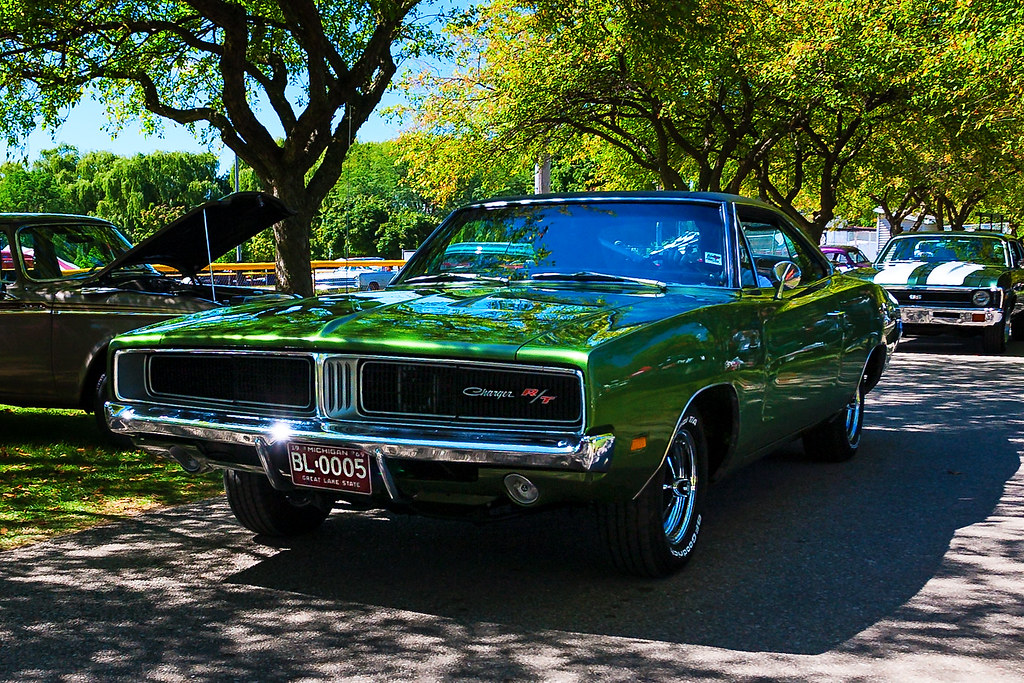
3. **1969 Dodge Charger R/T**Few muscle cars from the 1960s and 70s achieved the cultural recognition of the 1969 Dodge Charger R/T. With its unmistakable design, powerful engine options, and high-profile media appearances, the Charger became an enduring American muscle icon, defining performance and personality.
The 1969 Charger R/T (Road/Track) came with serious firepower. Standard models featured a 440 Magnum V8 producing 375 horsepower. For maximum performance, the legendary 426 HEMI engine was optional, unleashing 425 horsepower and 490 lb-ft of torque. Its aggressive styling—hidden headlights, full-width grille, fastback roofline, and “Coke bottle” profile—exuded raw strength.
Beyond specs, its pop culture presence cemented the Charger’s legend. Most famously, it starred in The Dukes of Hazzard as the “General Lee,” performing stunts and high-speed chases. It also featured prominently in the 1968 film Bullitt, in what’s considered one of cinema’s greatest car chases.
The 1969 Dodge Charger R/T perfectly exemplifies when performance engineering, compelling design, and pop culture converged. It resonated far beyond automotive circles. To this day, it remains a collectible and beloved muscle car, admired for its unique blend of aggression and charisma.
Car Model Information: 2022 Dodge Charger R/T Scat Pack
Name: Dodge Charger
Caption: 1969 Dodge Charger
Manufacturer: Dodge
Production: 1966–1978,1981–1987,2005–present
ModelYears: 1966–1978,1982–1987,2006–present
Categories: 1960s cars, 1970s cars, 1980s cars, 2000s cars, 2010s cars
Summary: The Dodge Charger is a model of automobile marketed by Dodge in various forms over eight generations since 1966.
The first Charger was a show car in 1964. A 1965 Charger II concept car resembled the 1966 production version.
In the United States, the Charger nameplate has been used on mid-size cars, personal luxury coupes, subcompact hatchbacks, and full-size sedans.
Get more information about: Dodge Charger
Buying a high-performing used car >>>
Brand: Dodge Model: Charger
Price: $51,990 Mileage: 33,302 mi.
Read more about: The Road to Riches: 15 Classic Cars Skyrocketing in Value for Savvy Enthusiasts

4. **1971 Plymouth HEMI ‘Cuda**If any muscle car fully embraced its “bad-boy” image, it was the 1971 Plymouth HEMI ‘Cuda. This vehicle didn’t merely look intimidating; it truly was. Born from the wild performance battles of the early 1970s, the ‘Cuda was the high-performance Barracuda, widely considered one of the most desirable and extreme muscle cars ever produced.
The most potent variant, the HEMI ‘Cuda, featured Chrysler’s legendary 426 HEMI V8 engine, producing 425 horsepower and 490 lb-ft of torque. The engine had a racing pedigree, initially developed for NASCAR. Installed in the relatively small Barracuda body, it created a street-legal beast that dominated almost anything on the road.
With its short wheelbase and immense power, the ‘Cuda was notoriously quick off the line. Its aggressive stance made it a favorite among drag racers and performance enthusiasts. This uncompromised dedication to speed and attitude resonated with those seeking raw power.
The ‘Cuda represents the wild peak of muscle car excess, arriving just before the industry’s decline due to federal regulations and the 1973 oil crisis. Its rarity, performance, and radical design secured its place as one of the most legendary muscle cars of all time. It’s an icon for appreciating American high-performance engineering.
Car Model Information: 2017 Maserati Levante S
Caption: 1970 Hardtop Coupe
Name: Plymouth Barracuda
Manufacturer: Plymouth (automobile)
Production: 1964–1974
Assembly: Fenton, Missouri,Hamtramck, Michigan,Maywood, California,Windsor, Ontario
Layout: Front-engine, rear-wheel drive layout
Class: Pony car
Categories: 1970s cars, All articles with dead external links, All articles with unsourced statements, Articles with dead external links from February 2018, Articles with dead external links from January 2022
Summary: The Plymouth Barracuda is a two-door pony car that was manufactured by Chrysler Corporation from 1964 through 1974 model years.
The first-generation Barracuda was based on the Chrysler A-body and was offered from 1964 until 1966. A two-door hardtop (no B-pillar) fastback design, it shared a great majority of parts and bodywork with the Plymouth Valiant, except for the distinctive wraparound rear glass.
The second-generation Barracuda, though still Valiant-based, was heavily redesigned. Built from 1967 through 1969, it was available as a two-door in fastback, notchback, and convertible versions.
The third generation, offered from 1970 until 1974, was based on the Chrysler E-body, exclusive to it, and the slightly larger Dodge Challenger. A completely new design, the two-door Barracuda was available in hardtop and convertible body styles.
Get more information about: Plymouth Barracuda
Buying a high-performing used car >>>
Brand: Plymouth Model: HEMI ‘Cuda
Price: $20,995 Mileage: 62,696 mi.
Read more about: Engineer’s Nightmare: 14 Classic Models That Define Automotive Repair Challenges in 2025

5. **Pontiac Firebird (1967–1969)**In 1967, Pontiac entered the “pony car” battle with the Firebird, a stylish sibling to the Chevrolet Camaro. While sharing foundations, the Firebird carved its own identity through unique styling and diverse engine choices. It immediately established itself as a formidable contender in the performance market.
Buyers had options from economical inline-sixes to potent small-block V8s. The robust 400-cubic-inch V8 definitively elevated the Firebird into true muscle car territory. High-performance Ram Air versions delivered up to 345 horsepower, giving Pontiac a strong entry against rivals like Ford’s Mustang and Mercury’s Cougar.
The Firebird offered a blend of sleek design and serious power, appealing to younger buyers craving aesthetics and acceleration. Its distinctive front end and integrated bumper grille gave it a unique visual signature. Despite being sometimes overshadowed by the Camaro in sales, the Firebird quickly earned respect on the street and track.
These early Firebirds were crucial, laying groundwork for the legendary Trans Am iterations that would emerge later. They demonstrated Pontiac’s commitment to performance beyond the GTO, offering powerful V8 options in a compact, sporty package. These Firebirds contributed significantly to American muscle car history.
Car Model Information: 1967 Pontiac Firebird LS3
Name: Pontiac Firebird
Caption: The second, third, and fourth generations of,the Pontiac Firebird Trans Am
Manufacturer: Pontiac (automobile)
Production: February 23, 1967 – August 30, 2002
ModelYears: 1967 – 2002
Class: Pony car,Muscle car
Platform: GM F platform
Related: Chevrolet Camaro
Layout: Front engine, rear-wheel-drive layout
Categories: 1970s cars, 1980s cars, 1990s cars, 2000s cars, All articles with dead external links
Summary: The Pontiac Firebird is an American automobile built and produced by Pontiac from the 1967 to 2002 model years. Designed as a pony car to compete with the Ford Mustang, it was introduced on February 23, 1967, five months after GM’s Chevrolet division’s platform-sharing Camaro. This also coincided with the release of the 1967 Mercury Cougar, Ford’s upscale, platform-sharing version of the Mustang.
The name “Firebird” was also previously used by GM for the General Motors Firebird series of concept cars in the 1950s.
Get more information about: Pontiac Firebird
Buying a high-performing used car >>>
Brand: Pontiac Model: Firebird
Price: $109,999 Mileage: 20 mi.
Read more about: Don’t Fall for the Hype: The 15 Cars That Look Absolutely Stunning But Drive Terribly

6. **Chevrolet Chevelle SS 396 (1965–1969)**Chevrolet’s direct answer to the groundbreaking Pontiac GTO arrived in 1965 with the Chevelle SS 396. This was a clear declaration of war in the muscle car segment, establishing the Chevelle SS as a serious contender. Under its assertive hood sat the formidable Mark IV big-block V8, offered in various outputs from 325 up to 375 horsepower.
The Chevelle SS 396 quickly became one of the most popular muscle cars of the decade. This was due to its compelling blend of aggressive styling, wide availability, and impressive quarter-mile times. Chevrolet had masterfully created a vehicle offering buyers a near-perfect mix of affordability and high-octane performance, making big-block power accessible.
This powerful machine became a fierce competitor in both organized drag racing and informal street racing. Drivers appreciated its robust chassis and reliable powertrain, capable of handling the immense torque and horsepower. Various performance-enhancing options further cemented its reputation as a customizable powerhouse for specific applications or street dominance.
By 1969, the Chevrolet Chevelle SS 396 unequivocally cemented itself as a true muscle car heavyweight. It stood as a powerful emblem of Chevrolet’s engineering prowess and commitment to providing accessible, high-performance vehicles. The SS 396 remains a beloved classic, symbolizing the heart of Chevrolet’s muscle car legacy.
Car Model Information: 2023 Chevrolet Silverado 1500 ZR2
Name: Chevrolet Chevelle
Caption: 1970 Chevrolet Chevelle SS 396 Sport Coupe
Manufacturer: Chevrolet
Production: 1963–1977
ModelYears: 1964–1977
Class: Mid-size
Platform: GM A platform (RWD)
Layout: FR layout
Successor: Chevrolet Malibu
Categories: 1970s cars, All articles needing additional references, All articles that may contain original research, All articles with specifically marked weasel-worded phrases, All articles with unsourced statements
Summary: The Chevrolet Chevelle is a mid-sized automobile that was produced by the Chevrolet division of General Motors (GM) in three generations for the 1964 to 1977 model years. Part of the GM A-body platform, the Chevelle was one of Chevrolet’s most successful nameplates. Body styles included coupes, sedans, convertibles, and station wagons. The “Super Sport” versions were produced through the 1973 model year and Lagunas from 1973 through to 1976.
After a four-year absence, the El Camino was reintroduced as part of the new Chevelle lineup in 1964.
From 1964 to 1969, GM of Canada sold a modified version of the Chevelle that included a Pontiac-style grille, and a LeMans instrument panel, marketed as the Beaumont.
The Malibu was the top-of-the-line model to 1972, and completely replaced the Chevelle nameplate starting with the redesigned, and downsized 1978 model year.
Get more information about: Chevrolet Chevelle
Buying a high-performing used car >>>
Brand: Chevrolet Model: Chevelle SS 396
Price: $55,987 Mileage: 16,987 mi.
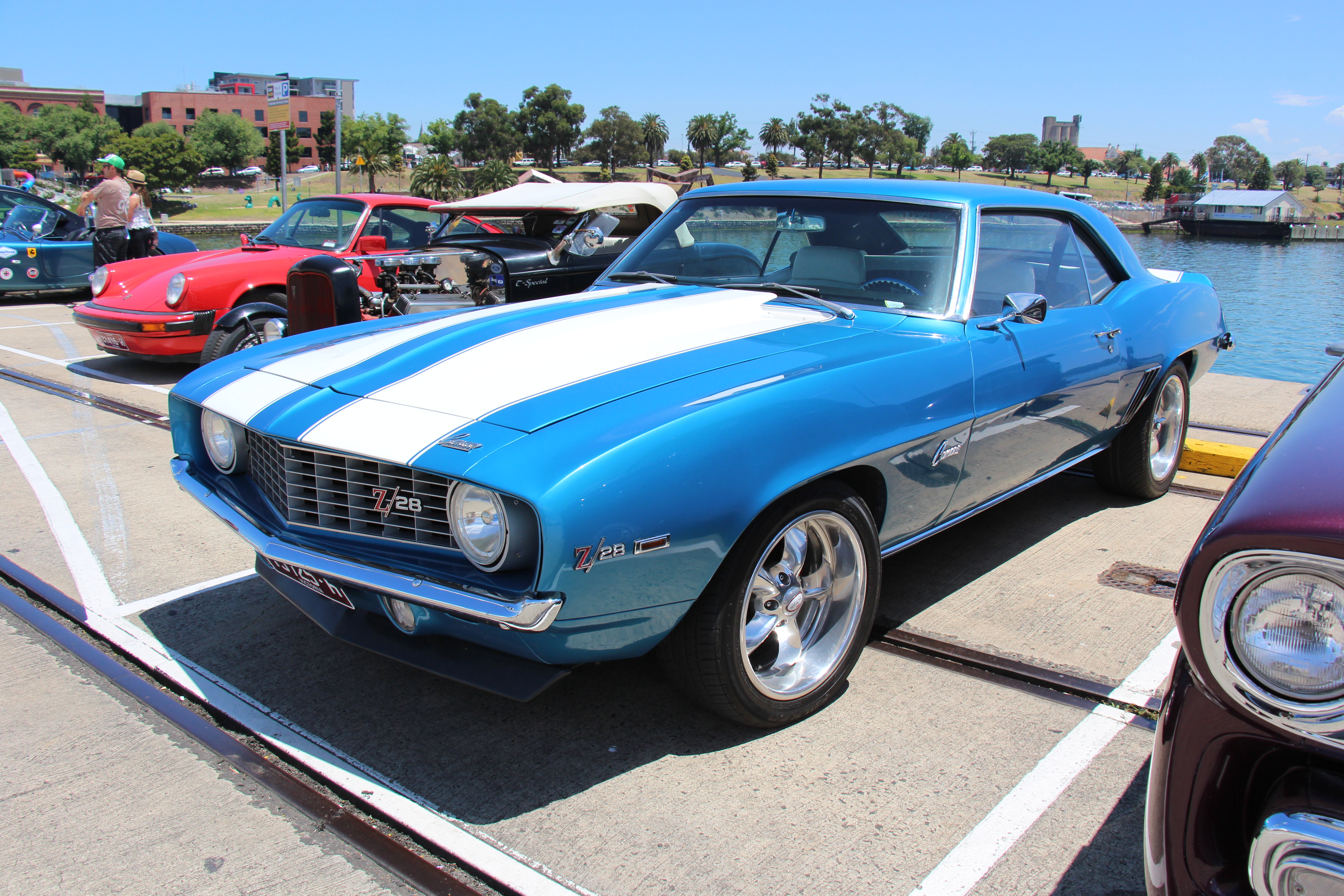
7. **Chevrolet Camaro SS and Z/28 (1967–1969)**The Chevrolet Camaro burst onto the scene in 1967, engineered as a direct rival to Ford’s successful Mustang. Designed with versatility, it offered options from economical six-cylinders to brutal V8s for unadulterated performance. The SS (Super Sport) and Z/28 models quickly emerged as flagship variants.
The Camaro SS packed a serious punch, typically equipped with the formidable 396 V8 engine for impressive straight-line acceleration. For specialized performance, the Z/28 featured a high-revving 302 cubic-inch V8, designed to homologate the Camaro for SCCA Trans-Am racing. This engine was tuned for quick throttle response and sustained high RPMs.
With outputs reaching up to 375 horsepower, the Camaro rapidly became a favorite for diverse motorsport enthusiasts. Drag racers cherished SS models for brute force; road course enthusiasts gravitated towards the nimble, race-bred Z/28. This wide range of trims and performance options allowed the Camaro to capture a broad market.
Beyond performance figures, the Camaro’s strong racing pedigree bestowed upon it credibility beyond the showroom. Its victories validated its engineering, cementing its reputation as a genuine performance machine. These 1967-1969 Camaros remain iconic examples of American muscle, balancing aggressive styling with track-proven power.
Car Model Information: 2018 Chevrolet Camaro 1LS
Name: Chevrolet Camaro
Manufacturer: Chevrolet
Production: 1966–2002,2009–2023
ModelYears: 1967–2002,2010–2024
Class: Pony car
BodyStyle: coupe,convertible
Platform: GM F platform,GM Zeta platform,GM Alpha platform
Layout: Front-engine, rear-wheel-drive layout
Categories: 1970s cars, 1980s cars, 1990s cars, 2+2 coupés, 2000s cars
Summary: The Chevrolet Camaro is a mid-size American automobile manufactured by Chevrolet, classified as a pony car. It first went on sale on September 29, 1966, for the 1967 model year and was designed to compete with the Ford Mustang. The Camaro shared its platform and major components with the Firebird, produced by General Motors’ Pontiac division that was also introduced for the 1967 model year.
Four distinct generations of the Camaro were developed before production ended in 2002. The nameplate was revived on a concept car that evolved into the fifth-generation Camaro; production started on March 16, 2009.
Production of the sixth generation of the Camaro ended in December 2023, for the 2024 model year.
Get more information about: Chevrolet Camaro
Buying a high-performing used car >>>
Brand: Chevrolet Model: Camaro
Price: $18,785 Mileage: 69,196 mi.
Read more about: The Apex of Automotive Heritage: 15 Classic Cars That Command State-by-State Allegiance Across America
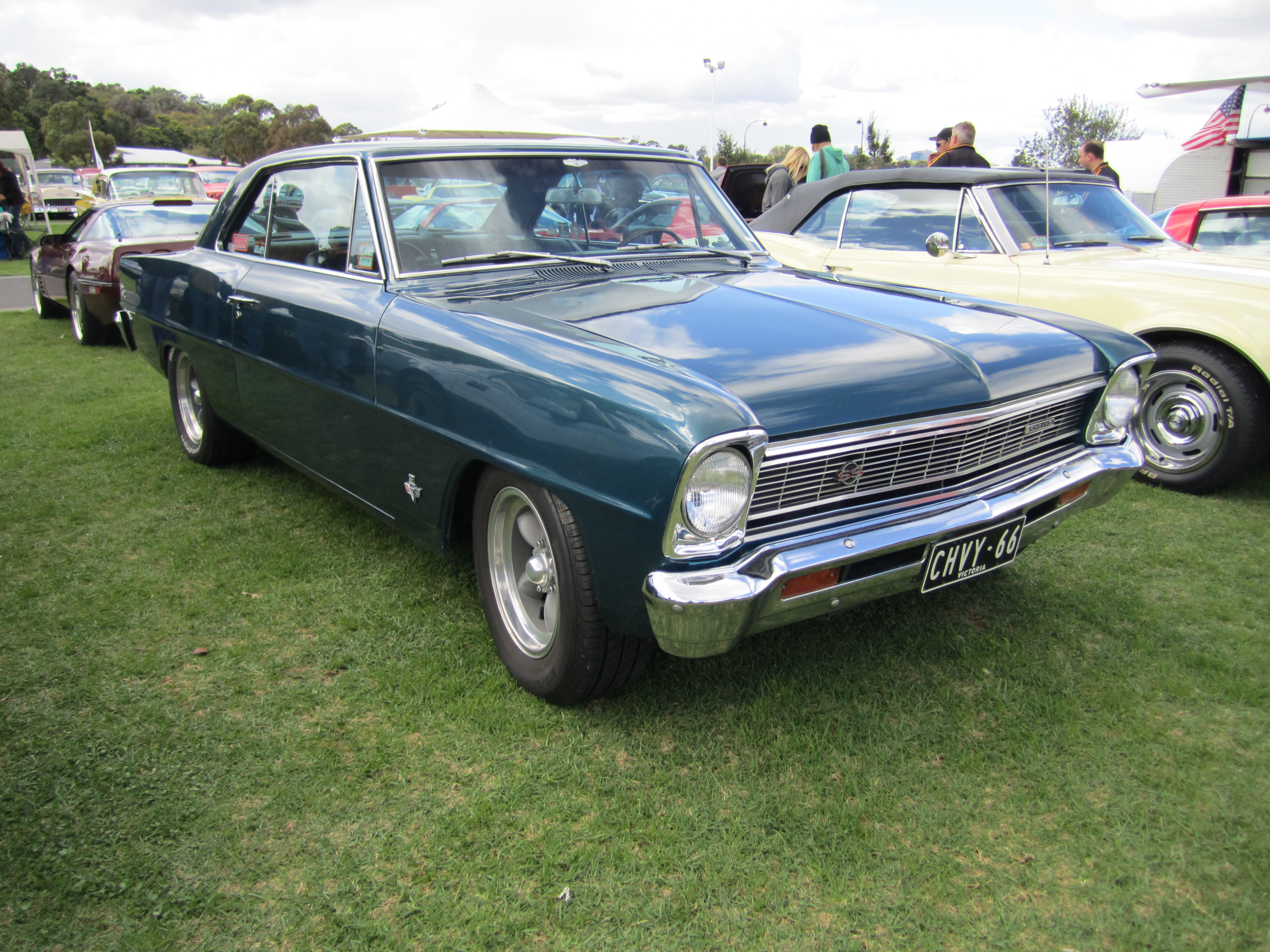
8. **Chevrolet Nova SS (1966–1969)**While the Chevrolet Nova was initially conceived as the brand’s compact car, its SS (Super Sport) trim endowed it with serious muscle credentials. By the late 1960s, buyers could spec their lightweight Nova with formidable 327 or larger 396 V8 engines, transforming this unassuming compact into a truly formidable drag car.
The Nova SS offered impressive performance in a compact package, making it appealing. It was notably affordable compared to larger Chevelle or Camaro counterparts. Its lighter weight often delivered superior acceleration for a given horsepower, appealing to younger buyers seeking big-block performance without higher insurance or weight.
Its “sleeper” appeal—the ability to surprise larger cars—contributed significantly to its street reputation. Many rivals underestimated the compact Nova, only to be left in its dust. This element of surprise, combined with robust performance, cemented the Nova SS as a cult favorite in street racing.
Today, the Chevrolet Nova SS from this era remains a highly cherished collector favorite, especially with powerful V8s. It represents an effective approach to muscle car design: packing maximum power into a minimalist, lightweight platform. The Nova SS embodies accessible performance, delivering a thrilling, high-horsepower experience.
Car Model Information: 1969 Chevrolet Nova Base
Caption: 1963 Chevrolet Chevy II 300 4-door sedan
Name: Chevrolet Chevy II / Nova
Manufacturer: unbulleted list
ModelYears: unbulleted list
Production: unbulleted list
Class: unbulleted list
Successor: unbulleted list
Categories: 1970s cars, 1980s cars, All articles needing additional references, Articles needing additional references from March 2025, Articles with short description
Summary: The Chevrolet Chevy II/Nova is a small automobile manufactured by Chevrolet, and produced in five generations for the 1962 through 1979, and 1985 through 1988 model years. Built on the X-body platform, the Nova was the top selling model in the Chevy II lineup through 1968. The Chevy II nameplate was dropped after 1968, with Nova becoming the nameplate for all of the 1969 through 1979 models. It was replaced by the 1980 Chevrolet Citation introduced in the spring of 1979. The Nova nameplate returned in 1985, produced through 1988 as a S-car based, NUMMI manufactured, subcompact based on the front wheel drive, Japan home-based Toyota Sprinter.
Get more information about: Chevrolet Chevy II / Nova
Buying a high-performing used car >>>
Brand: Chevrolet Model: Nova
Price: $38,000 Mileage: 2,535 mi.
Read more about: Beyond the Blockbuster: A Deep Dive into Dwayne ‘The Rock’ Johnson’s Multi-Million Dollar Car Collection

9. **Oldsmobile 442 (1964–1969)**Oldsmobile proved sophistication could meet serious street performance with its 442. Introduced in 1964, the “442” designation originally referred to its four-barrel carburetor, four-speed manual, and dual exhaust. This formula signaled Oldsmobile’s clear entry into the muscle car market.
By 1968, the 442 packed a robust 400-cubic-inch V8, generating 350 horsepower. This formidable engine ensured the 442 was a true competitor. Oldsmobile cleverly positioned it as a refined alternative, blending thrilling performance with expected upscale features and comfort.
The 442 challenged perceptions, proving Oldsmobile could stand tall against Detroit’s performance giants. By decade’s end, it established itself as a respected and capable nameplate. The 442’s blend of power and poise left an indelible mark on muscle car history.
Car Model Information: 1969 Oldsmobile 442
Name: Oldsmobile 442
Manufacturer: Oldsmobile
ModelYears: 1964–1980,1985–1987,1990–1991
Class: Muscle car
Layout: FR layout
Caption: 1971 Oldsmobile 442
Categories: 1960s cars, 1970s cars, 1980s cars, All articles with unsourced statements, Articles with short description
Summary: The Oldsmobile 4-4-2 is a muscle car produced by Oldsmobile between the 1964 and 1987 model years. Introduced as an option package for US-sold F-85 and Cutlass models, it became a model in its own right from 1968 to 1971, spawned the Hurst/Olds in 1968, then reverted to an option through the mid-1970s. The name was revived in the 1980s on the rear-wheel drive Cutlass Supreme and early 1990s as an option package for the new front-wheel drive Cutlass Calais.
The “4-4-2” name (pronounced “Four-four-two”) derives from the original car’s four-barrel carburetor, four-speed manual transmission, and dual exhausts. It was originally written “4-4-2” (with badging showing hyphens between the numerals), and remained hyphenated throughout Oldsmobile’s use of the designation. Beginning in 1965, the 4-4-2s standard transmission was a three-speed manual along with an optional two-speed automatic and four-speed manual, but were still badged as “4-4-2″s.
Because of this change, from 1965 on, according to Oldsmobile brochures and advertisements, the 4-4-2 designation referred to the 400 cubic inch engine, four-barrel carburetor, and dual exhausts. By 1968, badging was shortened to simply “442”, but Oldsmobile brochures and internal documents continued to use the “4-4-2” model designation.
Get more information about: Oldsmobile 442
Buying a high-performing used car >>>
Brand: Oldsmobile Model: 442
Price: $43,990 Mileage: 24,000 mi.

10. **Buick Skylark Gran Sport (1965–1969)**Buick entered the muscle car scene by transforming its midsize Skylark into the Gran Sport (GS). Launched in 1965, the GS debuted with Buick’s powerful 401-cubic-inch “Nailhead” V8, rated at 325 horsepower. This declared Buick’s readiness to merge luxury with raw American power.
Subsequent years saw Buick boost the GS’s performance with larger 400 and 430 cubic-inch engines. These powerhouses ensured the Skylark Gran Sport delivered formidable acceleration. Buick aimed for buyers desiring high-performance thrills without sacrificing its brand’s renowned comfort and upscale interiors.
The Skylark Gran Sport carved a distinct identity for Buick, moving it beyond traditional luxury vehicles. While not hitting sales volumes of Chevelle or GTO, the GS line cemented Buick’s place. It proved power, style, and luxury could coexist, appealing to discerning performance enthusiasts.
Car Model Information: 2022 Honda Civic Sport
Name: Buick Skylark
Caption: 1972 Buick Skylark
Manufacturer: Buick
ModelYears: 1953–1954,1961–1972,1975–1998
Layout: FR layout,Front-engine, front-wheel-drive layout
Successor: Buick Century
Categories: 1980s cars, 1990s cars, All articles with unsourced statements, Articles with short description, Articles with unsourced statements from June 2018
Summary: The Buick Skylark is a passenger car formerly produced by Buick. The model was made in six production runs, during 46 years, over which the car’s design varied dramatically due to changing technology, tastes, and new standards implemented over the years. It was named for the species of bird called skylark.
The Skylark name first appeared on a limited production luxury convertible using the Buick Roadmaster’s chassis for two years, then was reintroduced in 1961 as a higher luxury content alternative to the entry-level Buick Special on which the Skylark was based upon. It was then positioned as Buick’s luxury performance model when the Buick GSX was offered. As GM began downsizing during the late 1970s, the Skylark became the entry-level model when the Special nameplate was used as a trim package designation, then in the 1980s was offered as a front-wheel-drive vehicle where it was both a coupe and sedan for three different generations.
Get more information about: Buick Skylark
Buying a high-performing used car >>>
Brand: Buick Model: Skylark Gran Sport
Price: $20,160 Mileage: 111,869 mi.
Read more about: Death Traps on Wheels: 10 Iconic American Cars Too Dangerous for Today’s Roads

11. **Dodge Coronet R/T (1967–1969)**While the Charger often grabbed headlines, the Dodge Coronet R/T silently delivered serious muscle performance in a less ostentatious package. Originally a midsize sedan, the Coronet R/T transformation brought immediate street credibility. It became a powerful, yet often underestimated, force on American roads.
Under the hood, the Coronet R/T was far from subtle, offering legendary Mopar engines like the potent 440 Magnum and iconic 426 HEMI. These powerplants provided immense straight-line speed. Its less flamboyant styling earned it a “sleeper” reputation, surprising many rivals.
The Coronet R/T appealed to buyers seeking uncompromising power in a practical, midsize format. It was crucial to Dodge’s strategy, allowing direct competition with GM and Ford’s midsize muscle. The Coronet R/T stands as a testament to Dodge’s engineering prowess.
Car Model Information: 2017 Maserati Levante S
Name: Dodge Coronet
Caption: 1967 Dodge Coronet R/T
Manufacturer: Dodge
Production: 1949–1959,1965–1976
Class: Full-size
Predecessor: Dodge Custom
Successor: Dodge Dart
Layout: FR layout
Categories: 1950s cars, 1970s cars, All articles with dead external links, All articles with unsourced statements, Articles with dead external links from June 2016
Summary: The Dodge Coronet is an automobile that was marketed by Dodge in seven generations, and shared nameplates with the same bodyshell with varying levels of equipment installed. Introduced as a full-size car in 1949, it was the division’s highest trim line and moved to the lowest level starting in 1955 through 1959. The name was reintroduced on intermediate-sized models from the 1965 until 1976 model years. Muscle car versions were available starting in 1965 with the 383 and 426 wedge cu in (7.0 L) Chrysler RB engine, followed in 1966 by the powerful 426 cu in (7.0 L) Chrysler Hemi. Other performance models included the “Superbee”, and featured, the 383 cu in (6.3 L) Magnum, among other engine options. The nameplate “coronet” is a type of crown worn by royalty.
In the 1980s, the Coronet was used on Dodge models marketed in Colombia.
Get more information about: Dodge Coronet
Buying a high-performing used car >>>
Brand: DODGE Model: Coronet R/T
Price: $20,995 Mileage: 62,696 mi.

12. **Dodge Super Bee (1968–1969)**To counter Plymouth’s successful Road Runner, Dodge introduced the Super Bee in 1968—a purpose-built, budget-friendly muscle car. Built on the Coronet platform, it prioritized performance and affordability, shedding luxuries for raw speed and aggressive styling. Its iconic badging made it instantly recognizable.
The Super Bee came standard with the robust 383 Magnum engine, offering plenty of punch. For more exhilarating performance, optional upgrades included the 440 Six-Pack and legendary 426 HEMI engines. These powerplants transformed the Super Bee into a drag-strip warrior.
Beyond performance, the Super Bee cultivated an enduring legacy with its memorable identity. The cartoon bee badging and aggressive styling captured the era’s rebellious spirit. Though its run was short, the Super Bee showcased Dodge’s ability to inject excitement into affordable performance.

13. **Plymouth GTX (1967–1969)**Plymouth’s GTX, marketed as “the gentleman’s hot rod,” addressed the demand for both power and panache. Positioned as a more upscale muscle car, it fused high-octane performance with premium trim and comfort. It targeted buyers desiring aggressive speed without forsaking luxury.
Commanding performance defined the GTX. Standard power came from Plymouth’s potent 440 Super Commando V8, ensuring formidable acceleration. For ultimate impact, the legendary 426 HEMI engine was optional, transforming the GTX into a truly dominant force on street and strip.
While its sibling, the Road Runner, garnered attention for its raw approach, the Plymouth GTX maintained a strong, respected presence. Its emphasis on premium features alongside uncompromising performance earned a dedicated following. Today, the GTX symbolizes Plymouth’s sophisticated muscle car legacy.
Car Model Information: 1967 Plymouth GTX
Name: Plymouth GTX
Manufacturer: Plymouth (automobile)
Production: 1967–1971,44,178 units
Class: Muscle car
Assembly: Detroit,Michigan
Layout: FR layout
Platform: Chrysler B platform
Caption: 1970 Plymouth GTX
Categories: 1970s cars, All articles needing additional references, Articles needing additional references from February 2010, Articles with short description, Cars discontinued in 1971
Summary: The Plymouth GTX is an automobile manufactured by Chrysler and marketed under its Plymouth division from 1967 to 1971. Introduced as the Belvedere GTX, it was positioned as a mid-sized upscale-trimmed performance muscle car through the 1971 model year.
Get more information about: Plymouth GTX
Buying a high-performing used car >>>
Brand: Plymouth Model: GTX
Price: $55,975 Mileage: 59,997 mi.
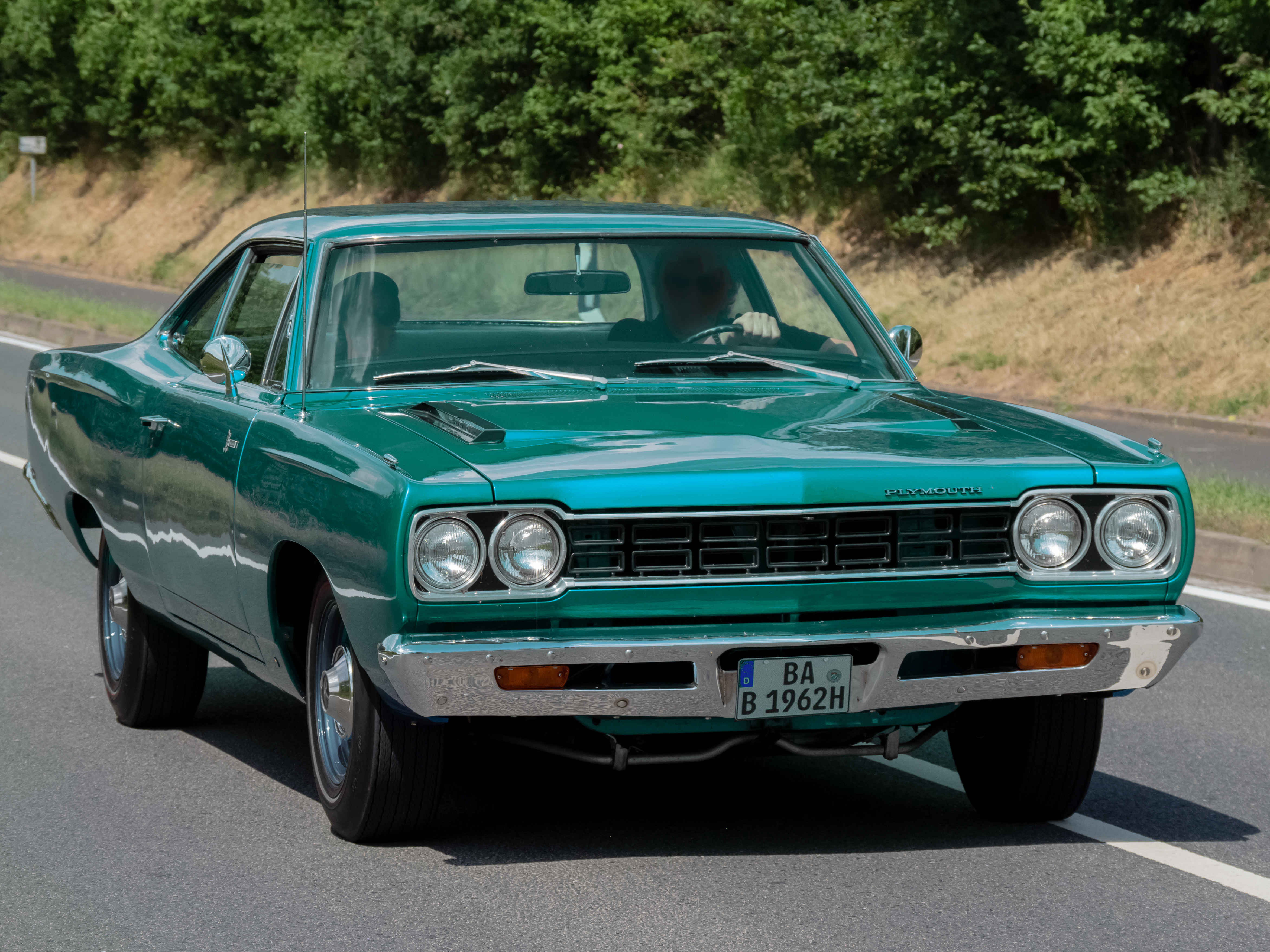
14. **Plymouth Road Runner (1968–1969)**The Plymouth Road Runner, introduced in 1968, embodied the muscle car era’s distilled essence. Designed as a no-frills, high-performance machine, it focused squarely on affordability and raw power. Its existence responded to the market’s insatiable appetite for speed.
The Road Runner’s mission was simple: go fast, cheaply. Standard was the stout 383 Magnum engine, providing ample horsepower. For absolute supremacy, the iconic 426 HEMI engine was an option, transforming it into a quarter-mile king. Stripped-down interiors kept its price attractive.
Beyond performance, the Road Runner cultivated an enduring legacy through memorable branding. Its cartoon mascot, with the “Beep-Beep” horn, resonated deeply. This blend of playful imagery and serious street credibility made it one of Plymouth’s best sellers and an instant hit for accessible fun.
Car Model Information: 2019 Dodge Charger GT
Name: Plymouth Road Runner
Assembly: Detroit,Michigan
Manufacturer: Plymouth (automobile)
Class: Mid-size car
Production: 1968–1980
Related: unbulleted list
Layout: FR layout
Categories: 1970s cars, 1980s cars, All articles needing additional references, All articles with peacock terms, All articles with unsourced statements
Summary: The Plymouth Road Runner is a muscle car introduced by Chrysler in the United States for the 1968 model year and marketed under its Plymouth brand. Initially based on the Belvedere, the brand’s basic mid-size model, the Road Runner combined a powerful engine with a spartan trim level and a price that undercut increasingly upscale and expensive muscle cars such as the Pontiac GTO and Plymouth’s own GTX. It was initially a sales success.
The Road Runner was built in three generations on the mid-size B platform. Like most muscle cars, its performance and sales declined in the 1970s due to an increasing focus on fuel economy and the adoption of more stringent U.S. emission standards. The nameplate became to a trim package for the compact Plymouth Volaré for model year 1976—no longer offering any special performance capability—and was discontinued in 1980.
Get more information about: Plymouth Road Runner
Buying a high-performing used car >>>
Brand: Plymouth Model: Road Runner
Price: $14,990 Mileage: 116,956 mi.

15. **Ford Mustang GT / Mach 1 (1965–1969)**The Ford Mustang, an automotive icon, redefined the landscape in 1964, creating the “pony car” segment. While early Mustang GT models offered exhilarating V8 performance, the 1969 Mach 1 pushed the Mustang into the upper echelons of muscle car dominance, blending iconic styling with uncompromising power.
The Mustang GT quickly became a sensation, featuring V8 engines that turned its sporty chassis into a formidable street machine. The 1969 Mach 1 took this further, with powerful options including the 351, 390, famed 428 Cobra Jet, and Super Cobra Jet engines. This made the Mach 1 a serious drag-strip contender.
Ford masterfully marketed the Mustang as an affordable, stylish performance package, cementing its status as a defining car of the era. The GT and Mach 1 showcased Ford’s ability to evolve a successful formula, proving the Mustang could be both a popular icon and a high-performance muscle car.
Read more about: Death Traps on Wheels: 10 Iconic American Cars Too Dangerous for Today’s Roads

16. **AMC AMX (1968–1969)**American Motors Corporation (AMC), often an underdog, boldly introduced the AMX in 1968. This distinctive two-seat performance coupe was a daring departure, designed to challenge perceptions. The AMX stood out for its compact size, aggressive stance, and focus on pure driving excitement.
Despite its smaller stature, the AMX packed a serious punch. It offered powerful V8s, including the robust 390 cubic-inch V8, achieving impressive quarter-mile times in the low 14s. This lightweight, aggressive machine compared not just to other muscle cars, but even to sports cars like the Chevrolet Corvette.
The AMX remains one of AMC’s most collectible models. Its audacious design and formidable performance showcased AMC’s ability to innovate and deliver thrilling vehicles. The AMX is a powerful reminder that smaller manufacturers made significant contributions to the competitive muscle car landscape.
As we conclude our exhilarating journey through the golden age of muscle, it’s clear these machines were more than just metal, rubber, and roaring engines. They were rolling monuments to an era where engineering prowess met unrestrained passion, creating automotive legends that still ignite our imaginations. The thunderous rumble of a HEMI, the sleek lines of a Mach 1, or the unassuming power of a Road Runner—each tells a story of an unparalleled time when horsepower truly ruled the asphalt. These cars remain not merely relics of the past but vibrant, pulsating symbols of American ingenuity and a timeless pursuit of speed that continues to inspire. They stand as a testament to an unforgettable chapter in automotive history, reminding us that some legends, once forged in fire and chrome, truly roar forever.

